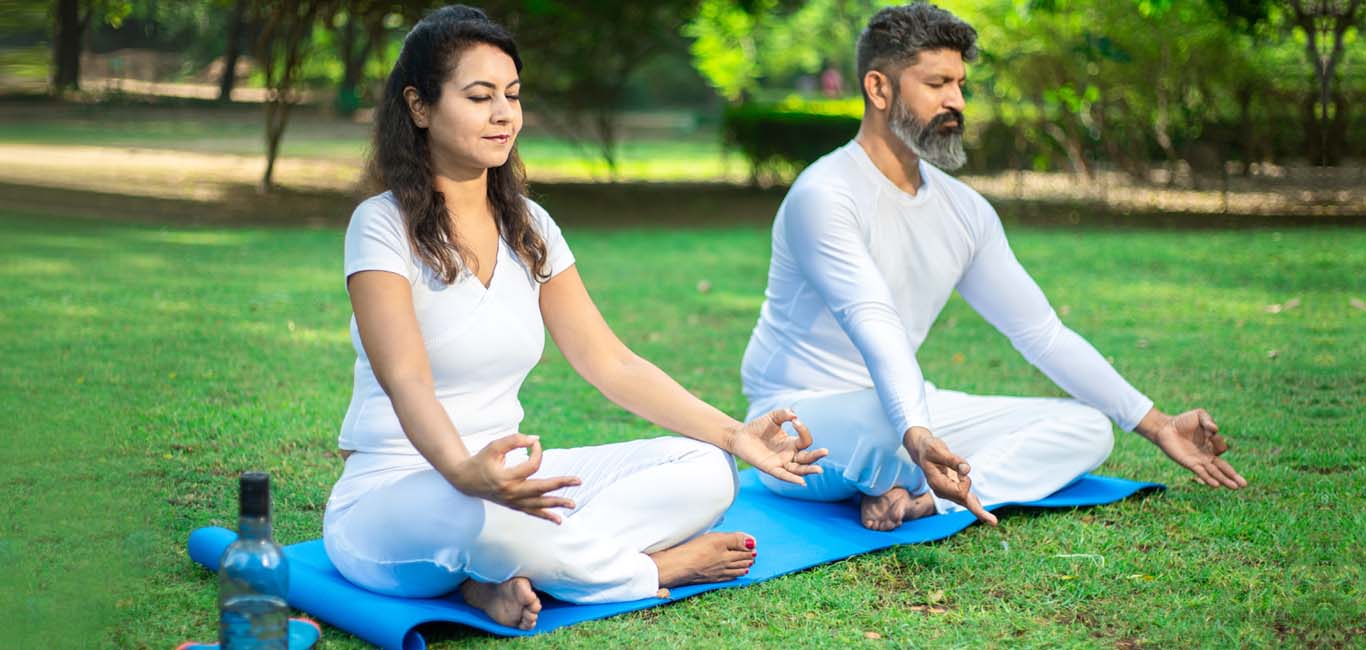
For Gaurav Sharma, an IT professional from Bengaluru, life seemed to be beautiful when he got the opportunity to work at a client location in Europe. But he found it difficult to adjust to the work and l culture. The stress slowly manifested physically in the form of headaches and body pain. “Later it became difficult for me to focus on my work,” he says. The doctor diagnosed it as stress and gave him some medicines. However, he chose meditation over quick-fix solutions.
“I started taking online meditation classes and felt better within a month,” says Sharma. He now practises yoga and meditation regularly. His headaches and other physical conditions disappeared. It helped him gain confidence as well.
Stress occurs when one fails to handle the demands and challenging situations thrown at one daily. It has also been linked to higher risk of headaches, muscle discomfort or tension, change in sex drive, and trouble sleeping. Meditation can be an effective tool to deal with stress in its early stages.
The effect of meditation and yoga practices
A study by Virginia Lemay on the Impact of yoga and meditation intervention on students’ stress and anxiety levels published in 2019 states, yoga and meditation help in reducing stress and anxiety. The results suggest that adopting mindfulness practice for as little as once per week for six weeks may reduce stress and anxiety.
Mind and mediation
Dr Shirley Telles, director at Patanjali Research Foundation who specialises in neurophysiology says the fundamentals of yoga and meditation include balancing and strengthening one’s mental state “so that it is less likely to fluctuate with all the problems it encounters but increase cognitive flexibility.”
It prepares the mind to cope with sudden changes it encounters. It is technically called cognitive flexibility. Meditation, thus, helps in mental balance as well as cognitive flexibility.
Prashant Tak, founder director at Chaitanya Wellness Yoga Academy, Bengaluru says, “An individual’s mental, physical, and emotional health can be balanced with the help of yoga.” He suggests mindful breathing and chanting mantras for handling stress.
Tak suggests five mindful and simple routines to tackle stress
- Exercise regularly
- Get enough sleep (7-8 hours daily)
- Practice deep breathing for at least 15 minutes a day
- Volunteer for society by assisting an NGO
- Take a short vacation every 3-4 months
Meditation techniques to beat stress
Telles recommends Brahma Kumaris’ Vipassana meditation technique, Aum Meditation, Heartful Meditation, and Raja Yoga (another type of meditation technique) for reducing stress.
Mindful ways to tackle stress
She further suggests that one of the easiest and most practical things is to be in the moment. If one is exercising or doing yoga, , one should be aware of his or her body and concentrate only on it. When one walks, be aware of it; when one eats, focus on the act of eating, do not watch TV or do office work then.
Positive effects of meditation on the brain
Chirag Bhatt, who teaches yoga and meditation and conducts retreats in Veerbhadra Yogalaya at Rishikesh in Uttarakhand, lists the positive effects of meditation on the brain.
- Daily chanting of mantras can increase one’s focus
- Cures physical and mental conditions
- Improves blood flow to the brain
- Decreases the frequency of thoughts
- Calms one’s brain and provides peace
Meditation techniques to beat stress as suggested by Bhatt
Breathing meditations
The mind can become sharper with breathing exercises and meditation. Simple breath-focused meditation provides various cognitive advantages such as improved focus, reduced mind wandering, increased good emotions, reduced emotional reactivity, and many more.
Mindfulness meditations
Mindfulness meditation is all about being present in the moment and not getting distracted by thoughts about the past or stressing about the future. Essentially, anything one does with all focus and attention could be considered a form of mindfulness.
Focus meditations
A focus meditation requires focusing on an object like a flower or candle and taking the time to fully examine it. One can select anything that stimulates one’s senses. It can be started by choosing an object of focus, like a candle, and sitting comfortably in front of it. As one breathes in and out, one can notice how the flame flickers or how the flame is made of several colours.
Mindful walking meditations
Walking meditations can be very rewarding and relaxing. The idea behind a walking meditation is to walk in silence as one observes everything that is going on around one. For people who have trouble sitting still for a regular meditation practice, walking meditation can be very healing.
Mantra meditation
Mantra meditations involve the repetition of a word or phrase, known as a mantra, to gain focus or clarity. The mantra can be chanted aloud or repeated silently. Chanting is a practice that has been used for ages.
Telles says, “Chanting mantras can reduce stress and anxiety. As it is a repetitive activity, it calms the mind.”

















